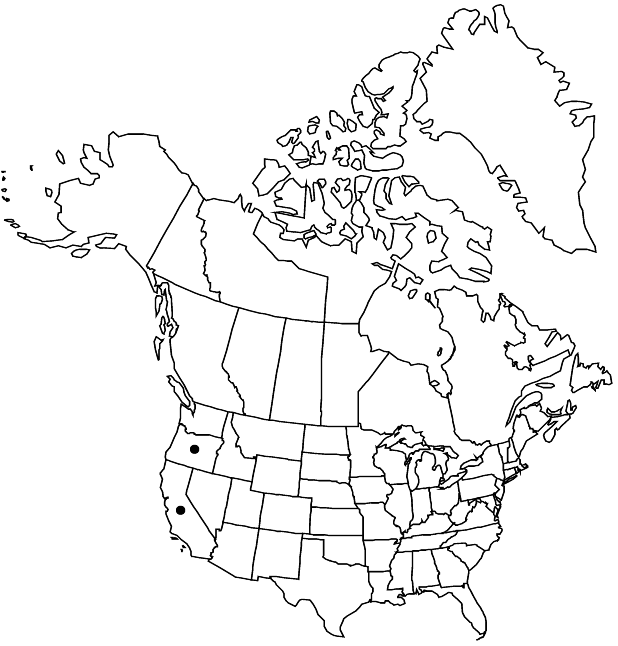Difference between revisions of "Lithophragma campanulatum"
Fl. N.W. Amer., 200. 1898 (as campanulata) ,.
FNA>Volume Importer |
FNA>Volume Importer |
(No difference)
| |
Revision as of 20:28, 24 September 2019
Plants slender to robust. Flowering stems often branched, 25–45 cm. Leaves in basal rosette and cauline, basal 3-lobed, cauline (1–2), 3-lobed, reduced, more finely dissected than basal; stipules small, not decurrent on petiole, (margins raggedly fimbriate); petiole 4–8 cm; blade dark green or reddish green, orbiculate, (base rounded), surfaces moderately hairy. Inflorescences 1–3, (lax), erect, 2–11-flowered racemes, sometimes branched, (10–25 cm). Pedicels shorter than hypanthium, (flowers ± sessile). Flowers persistent, fragrant, pendulous; hypanthium broadly campanulate, elongating slightly in fruit, throat not constricted, (length 2 times diam.); sepals erect in bud, widely spreading after anthesis, triangular; petals (partly included), spreading, white, ovate-elliptic, lamina tonguelike, narrowly clawed, palmately lobed, 3–7 mm, ultimate margins lacerate; ovary superior; styles well exserted in fruit; stigma papillae apical. Seeds 0.6 mm, tuberculate (tubercles in 3–19 distinct rows, blunt).
Phenology: Flowering Apr–Jul.
Habitat: Well-drained, moist, semishaded slopes with northern exposure, oak-coniferous woodlands
Elevation: 100-2200 m
Discussion
Lithophragma campanulatum is known from the Siskiyou Mountains, adjacent Klamath and Cascade mountains, and adjacent Sierra Nevada in northern California and southern Oregon.
Selected References
None.
